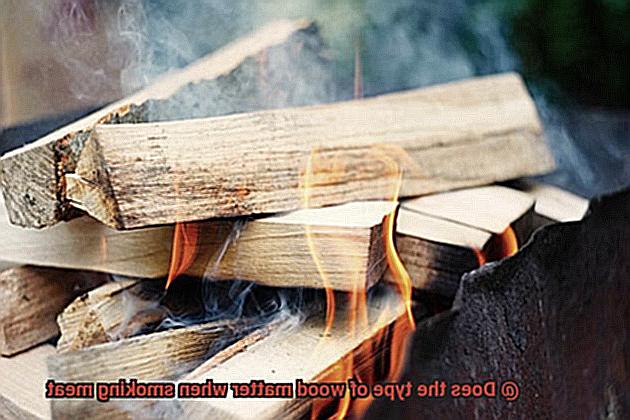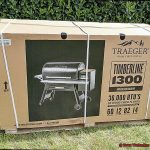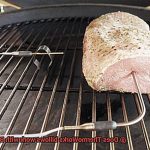Today, we’re diving headfirst into a sizzling topic that has sparked countless debates among backyard heroes and pitmasters alike. Brace yourselves, because we’re about to answer the age-old question: does the type of wood you use for smoking meat actually make a difference?
Sure, there are plenty of factors that contribute to mouthwatering smoked goodness. But let’s not overlook the pivotal role that wood plays in this smoky symphony. From subtle flavor twists to tantalizing aromas, your choice of wood can either catapult your barbecue game to new heights or leave it stranded in blandsville.
So, buckle up as we embark on an epic journey through the world of smoking. We’ll unravel the secrets behind different wood types and unlock the key to crafting that perfect smoky masterpiece that’ll have your taste buds doing cartwheels. Are you ready to settle this debate once and for all? It’s time to put our taste buds to the ultimate test.
Join me as we venture into uncharted flavor territory and discover just how much power lies within those humble chunks of wood. Spoiler alert: prepare for a mind-blowing revelation that might just change your grilling game forever. Let’s dive in.
Contents
Different Types of Wood for Smoking Meat
Different types of wood impart distinct flavors, turning every barbecue session into a culinary adventure. This article delves into the realm of wood for smoking meat, exploring popular options and their ability to elevate your grilling game.
Hickory – The Bold and Smoky Powerhouse:
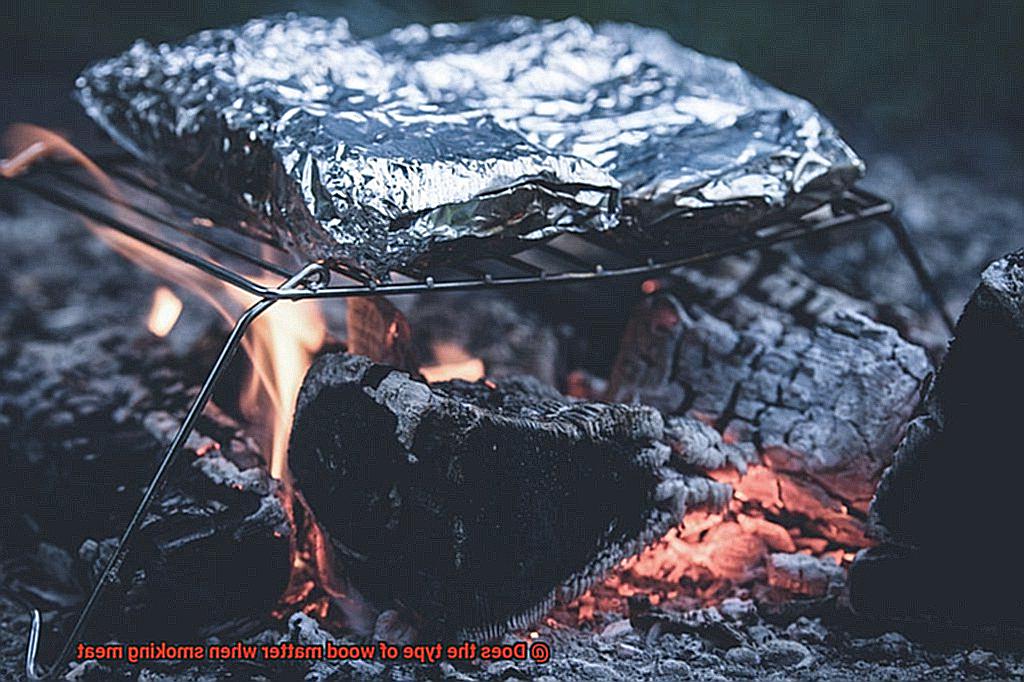
For those who relish hearty meats like beef and pork, hickory is the go-to wood. Its robust and smoky flavor adds a powerful punch to your favorite cuts. However, caution must be exercised when using hickory; its potency can easily overpower more delicate meats or flavors. To strike the perfect balance, use hickory sparingly, allowing its boldness to enhance the natural richness of your meat.
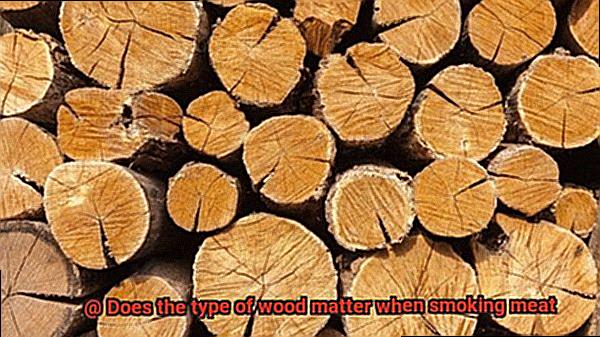
Mesquite – The Earthy Texan Favorite:
Transport yourself to the heart of Texas with mesquite wood. Its strong, earthy flavor is ideal for those who crave a touch of Southwestern flair in their grilling. Perfect for beef and game meats, mesquite adds depth and character to any barbecue feast. However, be mindful of using it sparingly, as its powerful aroma can dominate lighter meats or flavors.
Fruitwoods – Sweetness with a Subtle Touch:
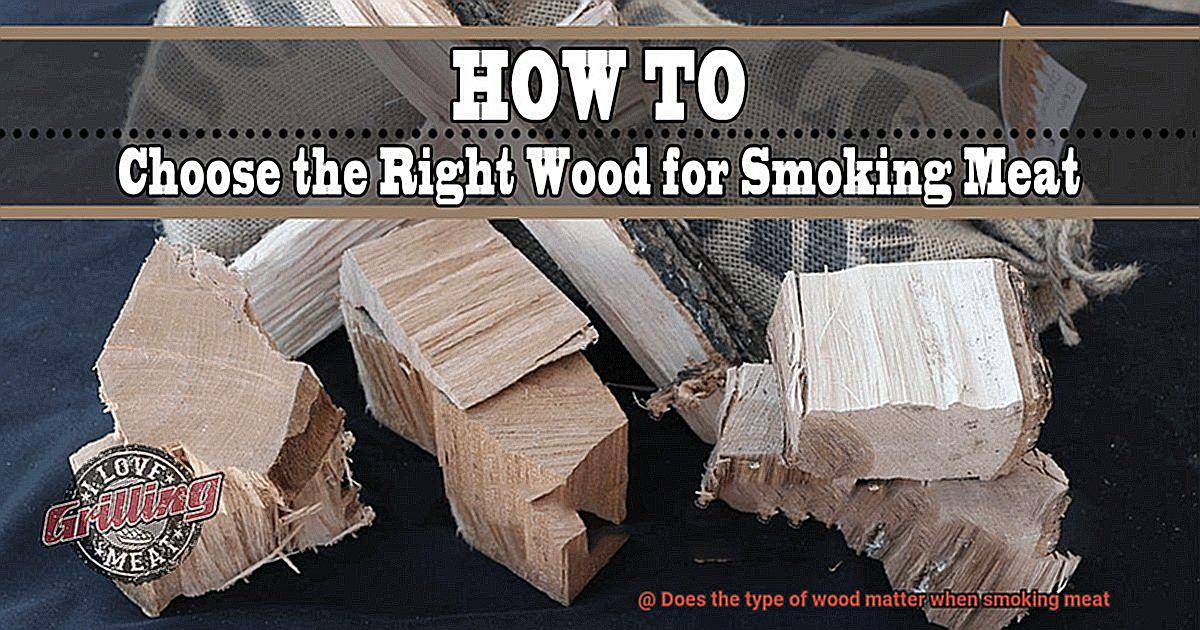
For a milder and sweeter flavor profile, fruitwoods like apple and cherry are the way to go. These woods work wonders with poultry, fish, and pork by infusing them with a delicate fruity taste. The subtle sweetness complements the natural flavors of the meat without overpowering them. With apple or cherry wood, you’ll achieve a harmonious balance that’ll leave your taste buds dancing.
Oak – The Versatile Companion:
Looking for a wood that pairs well with almost any meat? Look no further than oak. With its medium smoky flavor, oak is a reliable choice for achieving a well-rounded taste. It acts as a base wood that can be combined with other types to add depth and complexity to your smoke flavor. Whether you’re grilling beef, pork, or even vegetables, oak will be your trusty companion.
Pecan – A Nutty Twist:
If you seek a flavor reminiscent of hickory but with a milder touch, pecan wood is the answer.
It offers a rich and nutty taste that beautifully complements poultry and pork. Whether used alone or in combination with other woods, pecan adds a unique twist to your smoked dishes.
Prepare to savor the delightful marriage of flavors as the nuttiness of pecan dances on your palate.
Factors to Consider When Choosing the Right Type of Wood
The secret to achieving mouthwatering, smoky flavors lies in choosing the right type of wood for smoking meat. In this blog post, we will explore the factors to consider when selecting a wood for smoking, helping you create a culinary adventure that will leave your loved ones begging for seconds.
Flavor Profile:
The flavor profile of the wood you choose is crucial in determining the taste of your smoked meat. Different types of wood impart distinct flavors, ranging from mild and sweet to bold and robust. Fruitwoods like apple and cherry offer a delicate and slightly sweet flavor, perfect for poultry and seafood. Hardwoods such as hickory and mesquite provide a stronger smoky taste, ideal for beef and pork. Consider your desired flavor profile and choose a wood that complements your meat selection.
Meat Type:
Pairing the right type of wood with specific meats can enhance their natural flavors. Poultry tends to pair well with fruitwoods, while beef and pork can handle stronger woods like oak or hickory. Take into account the type of meat you are smoking and choose a wood that will elevate its taste.
Intensity Level:
The intensity level of the smoke is another vital factor to consider. Lighter woods like apple or pecan produce milder smoke, while stronger woods like mesquite or oak create a bolder smoky flavor. If you prefer a subtle smoky taste, opt for lighter woods, but if you crave a more intense experience, go for stronger ones. Keep in mind that some meats can handle stronger smoke flavors better than others, so adjust accordingly.
Availability:
Ensure that the wood you select is readily accessible in your area. While some types of wood are abundant, others may be harder to find or even unavailable. It’s essential to choose a wood that is readily available to ensure a consistent supply for your smoking needs. If a particular wood is not easily accessible, consider alternatives that offer similar flavor profiles.
Personal Preference:
Ultimately, your personal preference is key in choosing the right type of wood for smoking meat. Experimenting with different woods and flavors will help you discover your preferred combinations. Don’t be afraid to try new things and let your taste buds guide you towards your perfect match.
Popular Woods for Smoking Meat
Step into the tantalizing world of grilling and smoking meat, where the flavors dance on your palate and leave you craving for more. To elevate your backyard barbecues and astonish your loved ones with unforgettable tastes, selecting the perfect wood for smoking is paramount. Let’s embark on a journey through the most popular woods, each with its unique character and aroma.
- Hickory: The undisputed king of smoking, hickory reigns supreme. Its robust, smoky flavor creates an impeccable union with rich meats like succulent pork and hearty beef. However, caution must be exercised as its potency can occasionally overpower the meat.
- Mesquite: For those yearning for an authentic southwestern taste, mesquite is the answer. Its strong and earthy flavor elevates grilled meats to new heights. Endeavor to blend it with milder woods to avoid overpowering the delicate flavors of the meat.
- Applewood: Seeking a hint of sweetness and a burst of fruity flavors? Look no further than applewood. This wood imparts a subtle, slightly sweet taste that harmonizes effortlessly with lighter meats such as poultry and fish.
- Cherry Wood: Similar to applewood, cherry wood adds a delightful touch of tartness to your culinary creations. It gracefully infuses poultry and pork dishes with a subtle fruitiness that tantalizes the taste buds.
- Oak: Versatility is the essence of oak wood. With its medium smoky flavor, it complements an array of meats flawlessly. Often utilized as a base wood in smoking blends, oak adds depth and complexity to your smoked delicacies.
- Pecan: If you admire hickory but crave a milder alternative, pecan wood is your savior. This sweeter and gentler counterpart possesses a similar flavor profile that harmonizes exquisitely with pork and beef.
- Maple: Unleash a touch of sweetness upon your smoked dishes with the enchanting aroma of maple wood. Its delicate, subtle sweetness intertwines beautifully with all varieties of meats.
- Alder: Seeking an enchanting, slightly sweet flavor? Allow alder wood to work its magic. This delicate wood is particularly revered for smoking fish, transporting your taste buds to a realm of culinary bliss.
- Peach: For a mild and subtly fruity taste, the allure of peach wood is irresistible. Perfectly suited for poultry and pork dishes, it adds a captivating twist to your culinary creations.
The Size and Shape of Wood Chips and Chunks
If you’re passionate about the irresistible aroma and mouthwatering flavors of smoked meats, it’s time to unlock the secrets behind the size and shape of wood chips and chunks. These seemingly simple factors can make a significant difference in your grilling experience. Let’s explore the fascinating world of wood chips and chunks and how they can elevate your smoked dishes to perfection.
Finding the Right Size:
When it comes to wood chips, their size matters. Smaller chips ignite quickly, producing smoke faster and intensifying the smoky flavor. They are perfect for shorter cooking times and delicate meats like fish or poultry. On the other hand, larger chunks burn slower, providing a consistent smoke over a longer period. They are ideal for longer cooking sessions or when you prefer a milder smoky flavor. Consider the cooking time and desired intensity of flavor to select the appropriate size.
The Impact of Shape:
The shape of wood chips and chunks also plays a role in enhancing the smoking process. Rectangular chips stack neatly, ensuring a consistent burn and smoke distribution throughout your grilling session. On the other hand, irregularly shaped chunks create unique flavor profiles as different parts of the wood burn at different rates. Experiment with these distinctive shapes to add complexity to your smoked dishes.
Matching Wood Sizes to Your Grill:
To achieve optimal results, consider your grill or smoker’s specifications and manufacturer recommendations when choosing wood sizes. Different equipment may require specific sizes for efficient smoke production. Experimentation is key to finding the perfect fit for your particular setup.
Soaking for an Enhanced Experience:
Before using wood chips or chunks, soak them in water. This technique prolongs their burn time, preventing them from catching fire too quickly. Soaking ensures a steady release of flavorful smoke throughout your grilling session, enhancing the overall experience.
Soaking Wood Chips or Chunks Before Use
If you’re a grilling enthusiast, you’ve likely encountered the ongoing debate about whether or not to soak your wood chips or chunks before using them. Some grillers swear by it, while others argue that it’s unnecessary. So, what’s the deal? Let’s dive into the potential benefits and drawbacks of soaking wood before grilling.
Benefits of Soaking Wood Chips or Chunks:
- Enhanced Smoke Flavor: Proponents of soaking believe that wet wood produces more smoke, which in turn enhances the flavor of the meat. The moisture from soaking can create more smoke and infuse the meat with a tantalizing smoky aroma.
- Longer Burning Time: Soaking wood chips or chunks can slow down the burning process, allowing for a longer smoking session. This is particularly beneficial for low and slow cooking methods like smoking ribs or brisket, where a longer cooking time is desired.
- Controlled Smoke Release: Certain types of wood, such as cedar or fruit woods, have a tendency to burn quickly. Soaking these types of wood can help prevent them from burning too fast and ensures a more controlled release of smoke. This allows for a more consistent smoking experience.
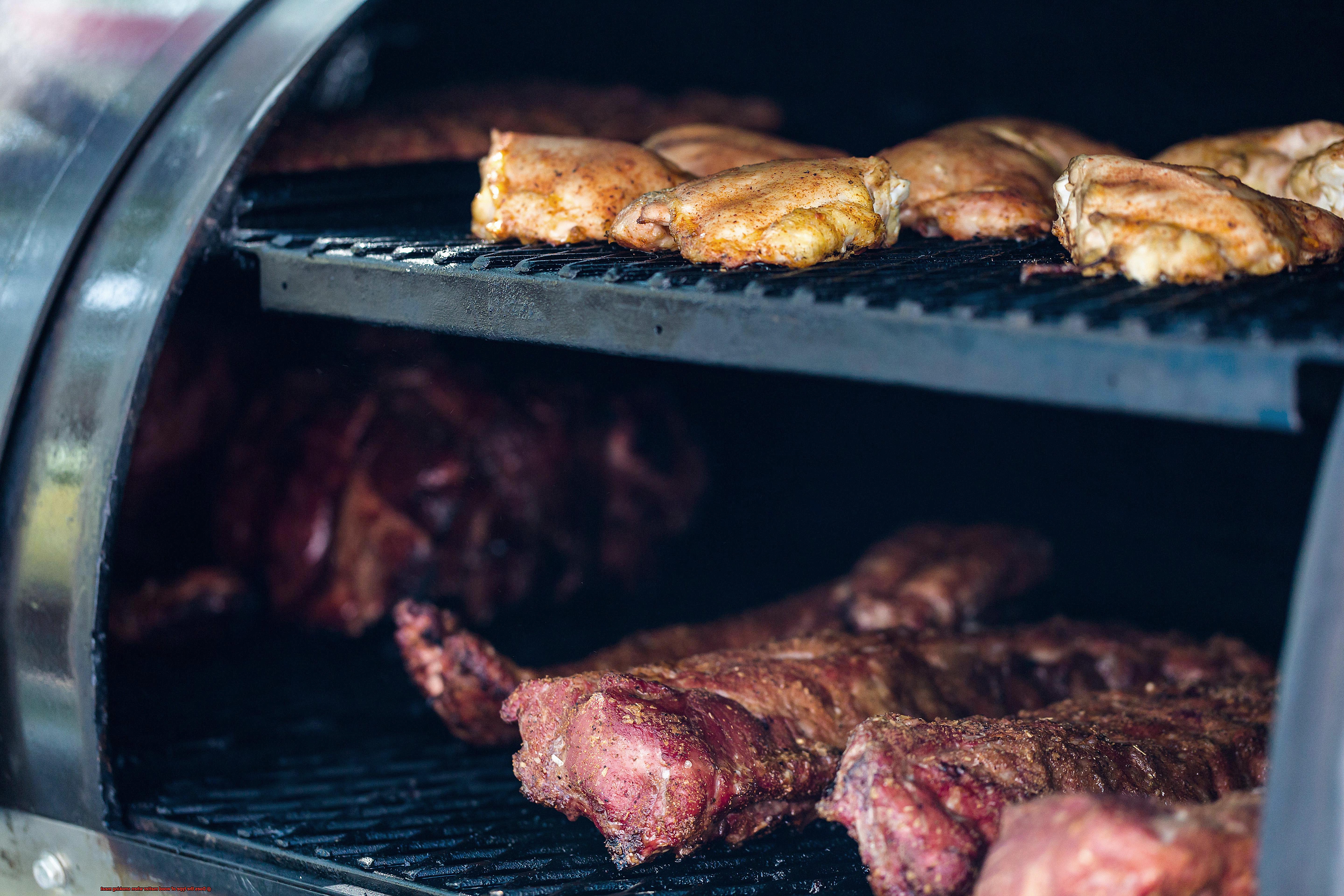
Drawbacks of Soaking Wood Chips or Chunks:
- Longer Ignition Time: Wet wood takes longer to ignite than dry wood. As a result, it may take longer for your grill to reach the desired temperature, resulting in extended cooking times overall. This can be frustrating for those who value efficiency in their grilling process.
- Uneven Heat Distribution: Because wet wood takes longer to ignite, it can lead to uneven heat distribution in your grill. This means that some areas of your meat may be overcooked while others are undercooked. Achieving perfectly cooked food may require extra attention and adjustment when using soaked wood.
- Bitter Smoke: When soaked wood is added to the grill, it can produce thick, billowing smoke initially. This smoke can be overpowering and potentially impart a bitter taste to your meat. The water in the soaked wood needs to evaporate before it can create a clean, flavorful smoke.
So, should you soak your wood chips or chunks before grilling? Ultimately, it comes down to personal preference and the specific cooking method you are using. Some grillers swear by soaking, while others prefer to use dry wood. The best way to determine what works for you is through experimentation. Try using both soaked and dry wood and see which produces the desired results in terms of smoke flavor and cooking time.
If you do decide to soak your wood, remember to do it properly. Soak the wood for around 30 minutes to an hour, any longer may not provide any additional benefits. It’s also important to dry the wood slightly before adding it to the grill to avoid excessive steam production.
Experimenting with Different Woods
Are you ready to take your grilling game to the next level and create mouth-watering meats that will have your friends begging for seconds? Well, it’s time to dive into the world of experimenting with different types of wood when smoking meat. Trust me, it’s a game-changer.
When it comes to smoking meat, the type of wood you use can make or break your grilling experience. Each wood carries its unique flavor profile, ranging from mild to strong, which can significantly impact the taste and aroma of your final masterpiece.
Let’s start with the boldness of hickory. This wood is perfect for beef and pork, adding a strong and robust flavor that will leave your taste buds tingling with pleasure. If you’re looking for intensity, mesquite is the way to go. Its smokiness complements bold meats like beef and game to perfection.
But what if you prefer something milder? That’s where oak comes in. Offering a more subtle flavor, oak is versatile enough to be used with poultry, fish, and even vegetables. And if you’re craving a touch of sweetness, fruitwoods like apple and cherry are the answer. These woods provide a delicate and mild smokiness that beautifully enhances poultry, pork, and fish.
Now, let’s not forget about pecan wood. With its nutty and slightly sweet taste, pecan works wonders for both light and dark meats. It adds a unique twist to your dishes that will keep everyone coming back for more.
Experimenting with different woods allows you to unleash your inner grill artist and customize the flavor profile of your smoked meats according to your preferences. If you’re working with delicate meats, start with milder woods like fruitwoods to enhance the natural flavors without overpowering them. As you gain confidence, gradually move towards stronger woods like hickory and mesquite for a more assertive taste.
Consider the type of meat you’re smoking when selecting your wood. Certain combinations can create magical flavor harmonies that will leave your taste buds dancing with joy. For example, pairing hickory with beef or pork creates a smoky symphony that elevates the flavors to new heights.
But here’s a pro tip: make sure to use properly seasoned and dried wood for optimal results. This ensures consistent smoke production and avoids any unpleasant flavors that could ruin your grilling experience.
Stronger Flavored Meats vs Lighter Meats

When it comes to grilling and smoking meats, the choice of wood can make a world of difference in the flavor, texture, and aroma of your creations. In particular, there is a distinct contrast between stronger flavored meats and lighter meats when it comes to the type of wood that works best.
Let’s start with stronger flavored meats like beef, lamb, or game meats. These bold and robust meats require woods that can hold their own against their powerful flavors. One popular choice is mesquite wood, known for its intense and smoky flavor with a hint of sweetness. Picture sinking your teeth into a perfectly smoked beef brisket, infused with the robust mesquite flavor that will make your taste buds sing.
Hickory wood is another fantastic option for stronger flavored meats. It brings a bacon-like flavor to the table, enhancing the savory qualities of these meats. Imagine biting into succulent pork ribs with an irresistible hickory kick – it’s a match made in grilling heaven.
Now let’s shift our focus to lighter meats such as chicken, turkey, or fish. These delicate meats have more subtle flavors and can be easily overwhelmed by strong wood flavors. For these meats, milder woods are preferred.
Fruitwoods like apple, cherry, or peach provide a subtle sweetness to lighter meats without overpowering their natural flavors. Just imagine biting into a perfectly smoked chicken breast with a touch of applewood smoke that adds a hint of fruity goodness to every bite.
Lighter hardwoods like oak or maple also work wonders with lighter meats. Oakwood offers a mellow smokiness that enhances the natural flavors without dominating them. Maplewood, on the other hand, adds a touch of sweetness and a mild smokiness that pairs beautifully with delicate meats like chicken or seafood.
Avoiding Toxic Woods for Food Safety
Choosing the right wood for grilling or smoking meat is like finding the perfect dance partner – it can either elevate the flavors and create a culinary masterpiece or leave a bitter taste in your mouth. But it’s not just about taste, it’s also about food safety. Some woods can release toxic chemicals when burned, which can be absorbed by the food and lead to health issues. In this article, we will explore the importance of avoiding toxic woods and provide safe alternatives for your grilling adventures.
The Dangers of Toxic Woods:
While woods like pine or cedar may seem tempting due to their aromatic qualities, they contain high levels of resin or sap that can produce toxic chemicals when burned. These chemicals, such as formaldehyde, creosote, and benzene, are known to be harmful to human health. Ingesting food smoked with toxic woods can result in unpleasant symptoms like nausea, vomiting, diarrhea, and in severe cases, organ damage.
Safe Wood Choices for Smoking:
To ensure food safety while achieving delicious flavors, opt for hardwoods like oak, hickory, apple, cherry, or mesquite. These woods are considered safe and commonly used for smoking meats. Hardwoods burn consistently and provide clean smoke that adds depth to your meats without compromising your health.
Avoid Treated or Painted Woods:
It is crucial to steer clear of wood that has been treated with chemicals or paints. When burned, these substances release harmful toxins into the air and contaminate your food. Always choose untreated wood specifically intended for food smoking purposes.
Tips for Selecting Safe Wood:
When purchasing wood for smoking, look for packages that clearly indicate the type of wood and its intended use for food smoking. If you’re unsure about the safety of a particular wood, it’s best to err on the side of caution and avoid using it altogether. Your health and the well-being of those enjoying your grilled creations should always be a priority.
He-Nw5-LMrE” >
Conclusion
When it comes to smoking meat, the type of wood you use can make a world of difference. The choice of wood can impart unique flavors and aromas that can elevate your barbecue game to new heights. Whether you prefer the rich and smoky notes of hickory, the sweet and fruity undertones of applewood, or the bold and robust taste of mesquite, each wood brings its own distinct character to the table.
Picture this: a slab of succulent ribs slowly cooking on a bed of glowing coals, wisps of fragrant smoke dancing in the air. Now imagine that same scene with a different type of wood. The flavor profile would change dramatically, wouldn’t it? That’s because different woods release different compounds when burned, infusing your meat with their essence.
Think about it like this: using oak wood might give your brisket a deep and earthy flavor, while cherry wood could lend a subtle sweetness to your pork shoulder. It’s like painting with flavors – each brushstroke adding depth and complexity to your culinary masterpiece.
But it’s not just about taste; the type of wood also affects how long you should smoke your meat. Some woods burn hotter and faster than others, requiring shorter smoking times to achieve that perfect tenderness. Others burn more slowly, allowing for a longer smoking process that imparts even more flavor into every bite.
So next time you fire up your smoker, consider experimenting with different types of wood. Let your taste buds be your guide as you embark on a flavorful journey through oak forests, apple orchards, and mesquite groves. Discover the nuances that each wood brings to the table and unlock a whole new world of mouthwatering possibilities.
In conclusion, yes – the type of wood does matter when smoking meat. It adds depth, complexity, and distinctive flavors that can take your barbecue from good to unforgettable. So go ahead, embrace the power of wood and let it work its magic on your next smoking adventure.

